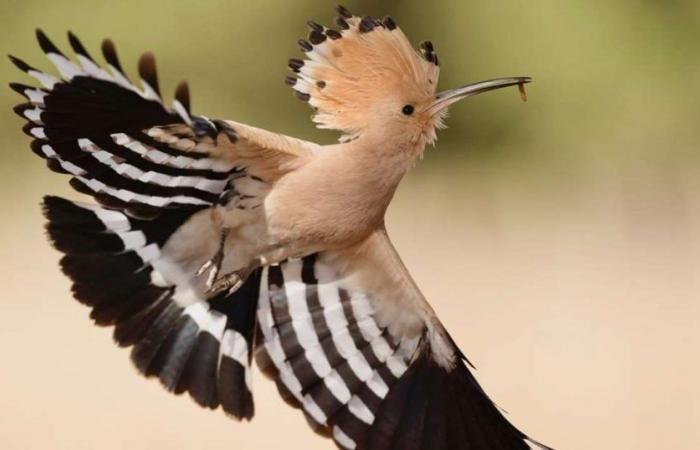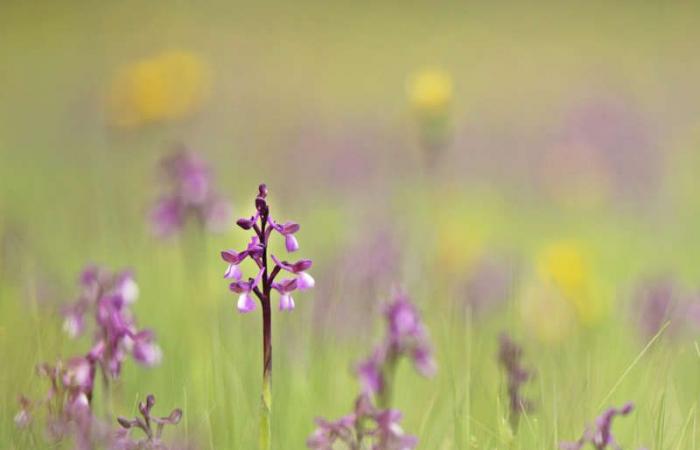The Hoopoe (epupa epops) It is a trans-Saharan migratory bird quite common in the pastures and Mediterranean mountains.. Recognizable by its song, its plume of feathers and its striking flight in waves, it is a species that we can identify as soon as it takes flight or we hear it sing.
We enter a hide surrounded by oaks, a hiding place where photographers can hide so as not to be seen, first thing in the morning, in order to take advantage of the first light of the day. In this enclave, we observe that an individual hoopoe frequently flies over its usual perch. Its trajectory around this area tends to follow similar patterns, something that benefits us when photographing it, as it provides us with an ideal point of view and perspective for the shot we have in mind.
The shooting data is ISO 1250; f/3.2; 1/10000 sec; Sony A9III camera; Sony FE 300mm F2.8 OSS lens; focal length 200mm; tripod with gimbal
Using this photograph we try to freeze the high-speed departure of the hoopoe from its settlement, since by making the same journey continuously we can predict the direction it will take. In this case we have a state-of-the-art camera that allows automatic high-speed focus capture, with tracking of the subject’s eye, as well as a shutter capacity and a shooting speed that makes it possible to obtain very effective results.
These innovative photographic equipment currently on the market have completely revolutionized the prevailing rules regarding photographic capture techniques. However, later we will explain how this same shot can be taken with a more common digital SLR camera.
The light that this time of day provides us is more than enough for the shot. This aspect allows us to adjust the aperture to f/3.2 and configure a shutter speed of 1/10,000 seconds, with the possibility of shooting at 120 frames per second and that the camera does not block.
A priori it seems like an excessive shutter speed, since at 1/2500 or 1/5000 we could obtain a similar image. However, when shuttering at 1/10000 at 120 frames per second, In a short time we have the option of taking shots two or three times faster than in a standard situation. That is, we have managed to obtain three more images of the bird’s path than if we worked at half speed.
Thus, This image has been selected from among many others that make up a series, where the pose of the bird, the position of the wings and the plume are ideal. Likewise, it also offers a flattering frame, where the hoopoe completes an oblique composition, resembling an arrow that crosses the image.
Similarly, this image could be made using a reflex camera digital by configuring a prefocus on the focal plane, sensing the path and position of the subject around the usual perch, with a shutter speed of 1/5000 or 1/2500 seconds.
In the case of the photograph taken, the focus has been made with eye tracking from the moment the hoopoe enters the frame until it leaves it. Despite using state-of-the-art equipment, the great speed of the animal requires reacting quickly in order to stay ahead of the bird so as not to cut its wings and capture its entire figure.







